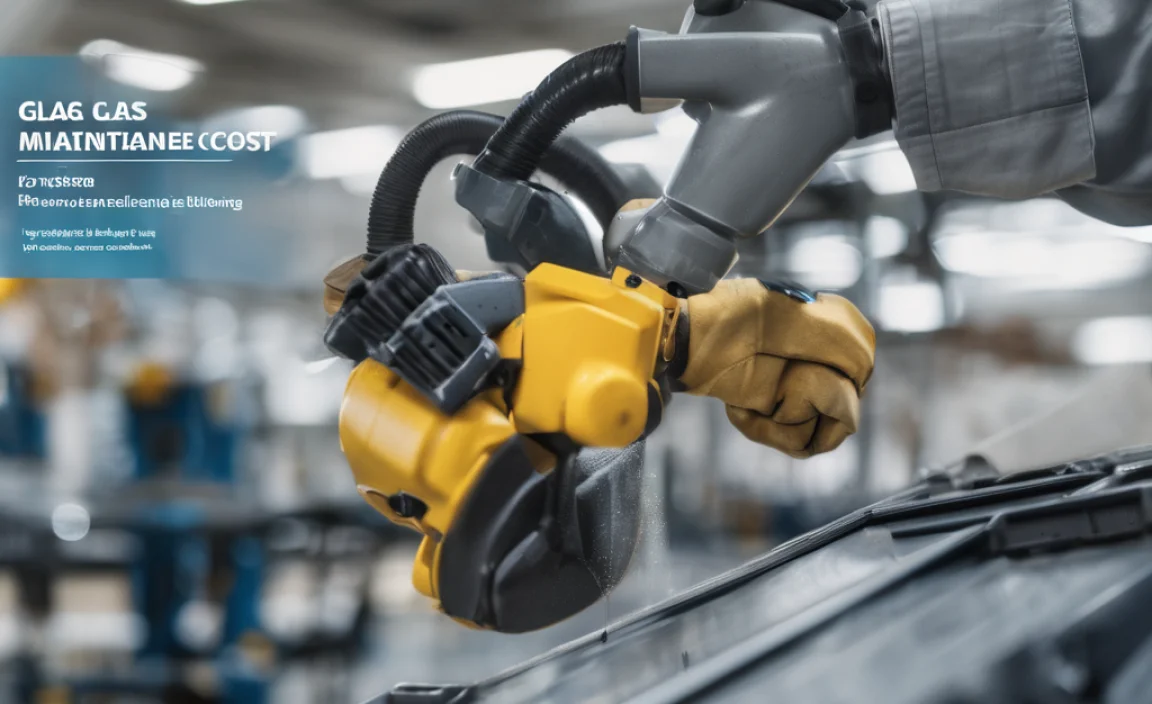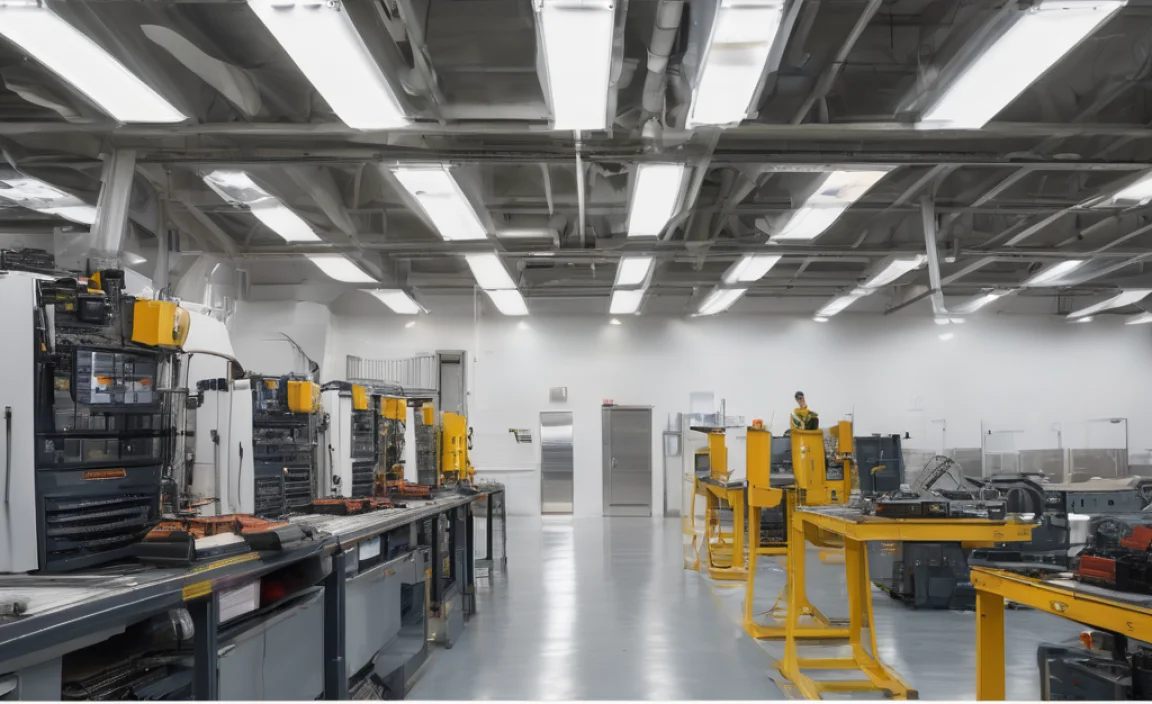GLA-Class Maintenance Cost: Essential Savings Revealed
Keeping your Mercedes-Benz GLA-Class running smoothly doesn’t have to break the bank. By understanding typical maintenance costs and adopting smart, proactive strategies, you can significantly reduce your ownership expenses. This guide will walk you through essential savings, from routine service insights to savvy DIY tips, ensuring your GLA-Class stays in top shape for less.
Owning a Mercedes-Benz GLA-Class is a fantastic experience, blending luxury with sporty performance in a compact package. However, many owners worry about the cost of keeping these premium vehicles in perfect working order. It’s a common concern, and finding reliable information about maintenance expenses can feel overwhelming. But don’t let those worries stop you from enjoying your ride! We’re here to demystify the process and show you practical ways to save money without compromising quality or safety. Get ready to feel confident about your GLA-Class’s upkeep! In this article, we’ll explore what influences GLA-Class maintenance costs and reveal essential savings strategies you can implement right away.
Understanding GLA-Class Maintenance: What to Expect

The Mercedes-Benz GLA-Class, known for its agile handling and premium interior, requires regular care to maintain its performance and luxury feel. Like any vehicle, it has scheduled maintenance points that address wear and tear, ensuring its longevity and preventing more significant issues down the line. Understanding these intervals and the typical services involved is the first step in managing your maintenance budget effectively.
Key Service Intervals for Your GLA-Class
Mercedes-Benz uses a flexible service system, often indicated by the ‘Service A’ and ‘Service B’ designations. Your vehicle’s specific needs will be displayed on the dashboard’s multi-function display when it’s time for service. However, general guidelines can help you prepare.
Service A is typically the first service, usually due around 10,000 miles or one year, whichever comes first. Service B follows, often due around 20,000 miles or two years. These services alternate throughout the car’s life.
Here’s a breakdown of common services within these intervals:
- Oil and Filter Change: Essential for engine health, this is a cornerstone of every service.
- Tire Rotation: Promotes even tire wear, extending tire life and maintaining handling.
- Brake Inspection: Checking brake pads, rotors, and fluid is crucial for safety.
- Fluid Level Checks: Ensuring all vital fluids (coolant, brake fluid, power steering fluid, windshield washer fluid) are at correct levels.
- Wiper Blade Inspection: Especially important for visibility in various weather conditions.
- Check for Leaks: Inspecting for any signs of fluid leaks under the car.
- Cabin Air Filter Replacement: Improves air quality inside the vehicle and reduces strain on the HVAC system.
- Engine Air Filter Replacement: Keeps the engine breathing clean air for optimal performance and fuel efficiency.
- Spark Plug Replacement: Usually at longer intervals, critical for engine ignition.
- Transmission Fluid Service: Important for the smooth operation of your transmission, typically done at higher mileage intervals.
Factors Influencing GLA-Class Maintenance Costs
Several factors can influence how much you’ll spend on GLA-Class maintenance:
- Vehicle Age and Mileage: Older vehicles or those with higher mileage may require more frequent or costly repairs as components naturally wear out.
- Driving Habits: Aggressive driving, frequent short trips, or driving in harsh conditions (e.g., heavy traffic, extreme temperatures, unpaved roads) can accelerate wear and tear.
- Location: Labor rates can vary significantly by region, impacting the overall cost of service, especially at dealerships.
- Choice of Service Provider: Dealerships typically have higher labor rates than independent Mercedes-Benz specialists or reputable general repair shops.
- Part Quality: Using genuine OEM (Original Equipment Manufacturer) parts often costs more than aftermarket alternatives, though they usually offer superior quality and fit.
Decoding the Costs: What to Expect for GLA-Class Maintenance

Let’s talk numbers. Understanding average costs for common maintenance tasks can help you budget wisely for your GLA-Class.
Estimated Costs for Common Maintenance Tasks
These are estimated ranges and can vary widely based on the factors mentioned above.
| Type of Service | Estimated Cost Range (USD) | Typical Interval |
|---|---|---|
| Service A (e.g., Oil Change, Filter, Tire Rotation, Inspections) | $250 – $500 | Approx. 10,000 miles or 1 year |
| Service B (includes Service A items plus more detailed checks) | $400 – $700 | Approx. 20,000 miles or 2 years |
| Brake Pad Replacement (Front) | $300 – $600 | Variable (depends on wear) |
| Brake Pad Replacement (Rear) | $250 – $500 | Variable (depends on wear) |
| Tire Replacement Set (4 tires) | $600 – $1200+ | Approx. 30,000 – 50,000 miles |
| Cabin Air Filter Replacement | $75 – $150 | 1-2 years or as needed |
| Engine Air Filter Replacement | $50 – $120 | 1-2 years or as needed |
| Wiper Blade Replacement | $40 – $80 | 6-12 months or as needed |
It’s important to remember that these figures are averages. A major repair, such as a transmission issue or an engine component failure, could be significantly more expensive. This is why preventative maintenance is so critical.
Essential Savings Strategies for Your GLA-Class

Now for the exciting part – how to keep those costs down! Smart ownership involves more than just driving; it’s about informed decisions regarding maintenance and care.
1. Be Proactive with Preventative Maintenance
This is the golden rule of saving money on any car, especially a luxury one. Don’t wait for a dashboard warning light or a strange noise to appear. Adhering to your GLA-Class’s scheduled maintenance is the single most effective way to prevent small issues from becoming expensive calamities. Regular oil changes keep your engine happy, tire rotations extend tire life, and timely inspections catch potential problems early. Think of it as investing a little now to save a lot later.
2. Explore Independent Mercedes-Benz Specialists
While dealership service centers offer expertise and genuine OEM parts, they often come with premium labor rates. For routine maintenance and many repairs, consider patronizing independent shops that specialize in Mercedes-Benz vehicles. These mechanics often have the same specialized knowledge and tools but can offer more competitive pricing. Look for shops with good reviews and certifications. Organizations like the Institute for Automotive Service Excellence (ASE) certify technicians, offering an extra layer of confidence. You can often find these specialists through online searches and local car forums.
3. Understand Your Warranty and Extended Coverage Options
New GLA-Class models come with a manufacturer’s warranty. Familiarize yourself with what it covers and for how long. For older vehicles out of warranty, explore reputable extended warranty providers. While an added expense, a well-chosen extended warranty can provide significant financial protection against unexpected, major repair bills. Always read the fine print carefully to understand coverage limits, deductibles, and exclusions.
4. Leverage Manufacturer Promotions and Dealership Coupons
Even dealerships occasionally offer discounts on service. Keep an eye out for manufacturer-backed service specials, seasonal promotions, or coupons from your local Mercedes-Benz dealership. Signing up for their email newsletters or following them on social media can alert you to these savings opportunities.
5. Consider DIY for Simple Tasks
Many basic maintenance tasks are surprisingly straightforward and can be done by an enthusiastic beginner with the right guidance. This is a fantastic way to save on labor costs and gain confidence in your car’s mechanics.
Here are some DIY-friendly maintenance items for your GLA-Class:
- Replacing Wiper Blades: This is usually a simple clip-and-replace job. Many auto parts stores will even help you do it in the parking lot.
- Topping Off Washer Fluid: Super simple, just locate the reservoir and pour in the fluid.
- Replacing Cabin Air Filter: Often located behind the glovebox, it can usually be accessed and replaced with basic tools.
- Replacing Engine Air Filter: Typically found under a plastic cover in the engine bay, secured by clips or screws.
- Checking Tire Pressure: Essential for safety, fuel efficiency, and tire longevity. A good quality tire pressure gauge is a worthwhile investment.
Always ensure you have the correct parts and tools, and consult your owner’s manual or a reliable online tutorial specific to your GLA-Class model for detailed instructions. Safety first!
6. Buy Tires Wisely
Tires are a significant expense. When it’s time for new ones, don’t just grab the first set you see.
- Shop Around: Compare prices from different tire retailers, both online and brick-and-mortar.
- Consider Brands: While premium brands offer excellent performance, consider reputable mid-tier brands that might offer better value.
- Look for Sales: Tire manufacturers and retailers often have sales events.
- Maintain Them: Proper inflation and regular rotations will maximize their lifespan.
A good set of all-season tires appropriate for your driving conditions can be a cost-effective choice.
7. DIY Cleaning and Detailing
While not strictly maintenance, keeping your GLA-Class clean can help preserve its finish and interior, potentially adding to its resale value. Regular washing and waxing can prevent paint damage from environmental contaminants. For interior care, simple vacuuming and wiping down surfaces with appropriate cleaners can keep it looking and feeling new. Invest in quality car care products that are safe for your specific finishes.
The Role of Tires in GLA-Class Maintenance Cost

Tires are consumables that directly impact performance, safety, and fuel economy, making their maintenance and replacement a significant part of your ownership costs. Choosing the right tires and caring for them properly can lead to substantial savings over time.
Selecting the Right Tires
For your GLA-Class, consider these tire types:
- All-Season Tires: The most common choice, offering a good balance of performance in various conditions (dry, wet, light snow). They generally offer a longer tread life than performance-specific tires.
- Performance Tires: If you prioritize handling and grip, especially in warmer climates, these are an option. However, they often wear faster and can be more expensive.
- Winter Tires: For areas with significant snow and ice, a dedicated set of winter tires can dramatically improve safety and traction. This is an additional cost, but often worth it for peace of mind and avoiding accidents, which are far more costly.
When purchasing, look for tires with a good treadwear rating (longer is generally better), a suitable speed rating, and a load index that meets or exceeds your vehicle’s requirements. For helpful information on tire maintenance and selection, the National Highway Traffic Safety Administration (NHTSA) provides excellent safety and consumer guides.
Maximizing Tire Lifespan
The lifespan of your tires can be significantly extended through proper care:
- Proper Inflation: Regularly check and maintain the correct tire pressure. Underinflated tires wear unevenly on the edges and can negatively impact fuel economy. Overinflated tires wear in the center and reduce ride comfort. Check your GLA-Class owner’s manual or the sticker on the driver’s side doorjamb for the recommended pressure.
- Regular Tire Rotations: Rotating your tires—typically every 5,000 to 8,000 miles—ensures they wear more evenly. Your owner’s manual will provide recommendations, but often it’s done every other oil change.
- Wheel Alignment: If you notice uneven tire wear or your car pulls to one side, get your alignment checked. Misaligned wheels can cause rapid and uneven tire wear, and also affect handling and fuel efficiency. This service might cost $100-$200 but can save you from replacing tires prematurely.
- Balance: Wheels that are out of balance can cause vibrations and uneven wear. Wheel balancing is typically done when new tires are installed or if you notice vibrations.
By combining smart tire purchasing with diligent maintenance, you can reduce the frequency of expensive tire replacements.
DIY Maintenance for Beginners: Taking the First Steps

Feeling intimidated by working on your car is normal, but many GLA patrols can be handled with basic tools and a little courage. Here’s how to get started safely:
Essential Tools for Basic DIY
You don’t need a professional mechanic’s toolkit to start. A few key items will get you going for simple tasks:
- Socket Wrench Set: A good set of metric sockets (6mm to 19mm) is indispensable.
- Screwdrivers: Both Phillips head and flathead in various sizes.
- Pliers: Standard, needle-nose, and perhaps a pair of slip-joint pliers.
- Owner’s Manual: Your most important tool! It contains vital information specific to your GLA-Class.
- Safety Glasses: Always protect your eyes.
- Work Gloves: To protect your hands.
- A Good Flashlight or Headlamp: You need to see what you’re doing.
- Jack and Jack Stands: If you plan to work under the car, NEVER rely solely on a jack. Use sturdy jack stands on a level, hard surface. Learn how to properly locate the jacking points for your GLA-Class.
Step-by-Step: Replacing Engine Air Filter (Example DIY)
This is a common task that significantly impacts engine performance and fuel economy.
Tools Needed:
- Replacement engine air filter (ensure it’s the correct part number for your GLA-Class)
- Screwdriver or socket wrench (depending on your model’s airbox design)
- Clean rags
Steps:
- Locate the Air Filter Housing: Open the hood and find the large, typically black plastic box connected to the engine’s intake.
- Open the Housing: This usually involves releasing clips or unscrewing a few screws. Consult your owner’s manual if unsure.
- Remove the Old Filter: Carefully pull out the old, dirty air filter. Note its orientation.
- Clean the Housing: Wipe out any debris or dust from inside the airbox with a clean rag.
- Install the New Filter: Insert the new filter, making sure it’s seated correctly and in the same orientation as the old one.
- Close the Housing: Securely reattach the cover, ensuring all clips or screws are fastened properly.
- Start the Engine: Briefly start your GLA-Class to ensure everything sounds normal.
This simple task can improve your engine’s breathing, potentially boosting performance and efficiency. If you’re unsure about any step, watch a video tutorial specific to your GLA-Class generation or seek assistance from an experienced friend or a mechanic for your first try.
Long-Term Cost Management and Reliability
Maintaining your GLA-Class isn’t just about the immediate expense; it’s about ensuring its reliability and value over the long haul.
The Benefits of a Clean Maintenance History
A well-documented history of regular maintenance is invaluable. It not only helps identify recurring issues but also significantly boosts your car’s resale value. Potential buyers are willing to pay more for a vehicle that has been meticulously cared for. Keep all your service records, whether from a dealership or an independent shop. If you perform DIY work, keep receipts for parts purchased.
When to Consider an Independent Specialist vs. the Dealership
Here’s a general guideline:
- Dealership: Ideal for warranty repairs, complex diagnostics requiring specialized factory tools (especially for newer models), and situations where you want the absolute peace of mind of official Mercedes-Benz service.
- Independent Specialist: Excellent for routine maintenance (oil changes, fluid checks, brake jobs), out-of-warranty repairs, and when you’re looking for more competitive pricing without sacrificing expertise. Many independent shops are highly skilled in Mercedes-Benz systems.
It’s always a good idea to get quotes from both if you’re facing a significant repair to compare costs.